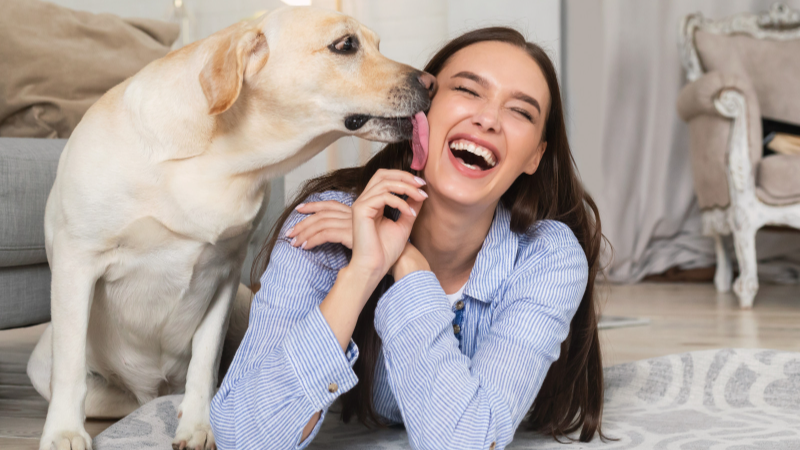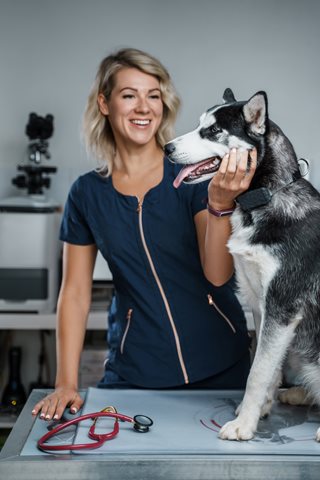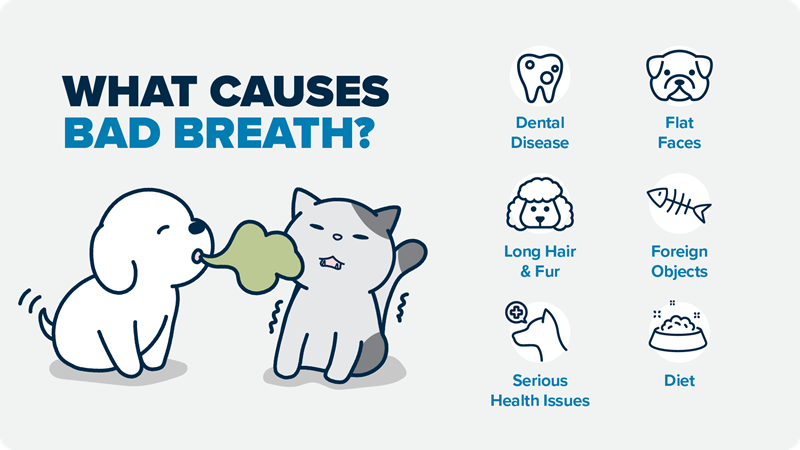
 Holy Moley! That’s my inner voice telling me what my nose knows. The furry patient in front of me suffers from halitosis – also known as bad breath. Pet families often know that their dog or cat’s breath isn’t minty fresh but might be too embarrassed to talk about causes and treatments.
Holy Moley! That’s my inner voice telling me what my nose knows. The furry patient in front of me suffers from halitosis – also known as bad breath. Pet families often know that their dog or cat’s breath isn’t minty fresh but might be too embarrassed to talk about causes and treatments.
I’m here to tell you that you don’t have to be flustered or worried about this conversation. Let’s talk about bad breath in pets.
Stinky fish and poop breath – is that bad breath?
First, we have to chat about oral anatomy.
There’s this thing called the dental biofilm that covers teeth. The biofilm, also known as plaque, is made up of bacteria, food particles, saliva, and sticky substances that coat the teeth and settle down into the gums.
If left alone, minerals in the saliva interact with the plaque to form calculus or tartar. We see the calculus forming in the gingival spaces or gum pockets around teeth and between teeth. That’s the hard beige, brown, grey (or sometimes green!) stuff that you see at the gumline. Halitosis, the bad smells, come from sulfur compounds produced by certain species of mouth bacteria.
What are signs of dental disease?
- Pawing at their mouth
- Breathing problems
- Bad breath
- Discoloured or smelly drool
- Bleeding from the mouth
- Gagging
- Difficulty chewing and swallowing
What causes bad breath?
1. Inflammation and Infection
Small and toy dog breeds are more prone to periodontal disease than their bigger cousins.Periodontitis refers to the condition where the gums become inflamed, infected, and lose their attachment to the base of the tooth and down into the root. Tartar can collect right down to the root tip and cause loosening of the tooth in the jaw. Ouch!
2. Flat-faced cat and dog breeds
These breeds tend to have crooked teeth, squished mouths, and throat anatomy. It can contribute to more significant dental disease including periodontitis and loose teeth and is more common when compared to breeds with longer muzzles.3. Long hair and fur
Moustaches and beards in terriers, doodle-types, jowly dogs, and any other longer-coated breed may have smellier faces because food, saliva, and bacteria get trapped in lip crevices and hair.4. Foreign Objects
Foreign objects like sticks, grasses, rubber material, rawhides, and bones can get trapped at the back of the mouth or between teeth. Watch your pet for common signs like pawing at his mouth, breathing problems, and bad breath.5. Serious health issues
Oral growths and tumours can be a source of severe halitosis. Cats and dogs don’t need to be seniors to have these problems. We can see viral papillomas, epulis conditions, gingival hyperplasia, and cancer even in younger pets.Systemic illnesses, such as diabetes mellitus, kidney disease, liver conditions, throat issues, and stomach problems, can each cause breath that smells like urine or rotting food.
6. Diet
Diets that contain raw meat ingredients, fish oils, and the occasional litter box snack (some dogs love kitty poopsie-rolls) may influence the state of your pet’s breath but not necessarily affect dental health.
Halitosis is the tip of the oral health iceberg
Eighty percent of dogs and seventy percent of cats show signs of dental disease by the time they are four years old. Bad breath is one of the first signs that there might be a problem. Start brushing your pet’s teeth early to get them used to having your hands around their face and in their mouth.
Use a positive approach to teaching your pet to allow daily tooth brushing.
What about breath mints for pets? Will they stop bad breath? The short answer is no. Feel free to bake for your pet and enjoy the happy look on their face as they munch on their delicious treats. Just know that you are not affecting their dental health at all.
Remember to use pet-safe recipes and stay away from xylitol, raisins, and chocolate-containing ingredients, which are toxic for our pets. Your veterinary team can recommend appropriate dental diets, chews, and products with known oral health benefits.
Dogs and cats don’t know that it’s not supposed to hurt
Yes, I mean the double negative. Clients have told me that their dog or cat has bad breath, but it doesn’t bother the animal. I am here to say that dental pain is as real for pets as it is for people. Dogs and cats know their mouths hurt – they just don’t know why or what to do about it.
They still eat all their food, so what’s the problem? Watch closely. Maybe they only chew on one side of their mouth or take longer to finish a meal. There are pets who “wolf” down their food and look like they have a great appetite. The reality is that it may hurt too much to chew.

Cats and dogs just don’t know how to complain because dental disease often progresses slowly, and they don’t know how to stop the discomfort. Let’s pay attention to those subtle signs, so we can intervene before we have to worry about tough stuff like oral infections and tooth loss.
We love our pets – funky breath and all. Ask your veterinary team how you can manage your furry kid’s halitosis to ensure they are living their healthiest and happiest life.
Pet insurance can help with the cost of vet visits
We can delay the need for veterinary care with brushing and other preventive measures, but regular veterinary examinations are required to assess your pet’s oral health. Once dental disease has been diagnosed, your veterinarian will offer their recommendations for full assessment and treatment.
We love our pets – funky breath and all. Ask your veterinary team how you can manage your furry kid’s halitosis to ensure they are living their healthiest and happiest life.
Dental coverage is included in all Petsecure plans. Learn what’s covered by Petsecure and get a free quote today.

